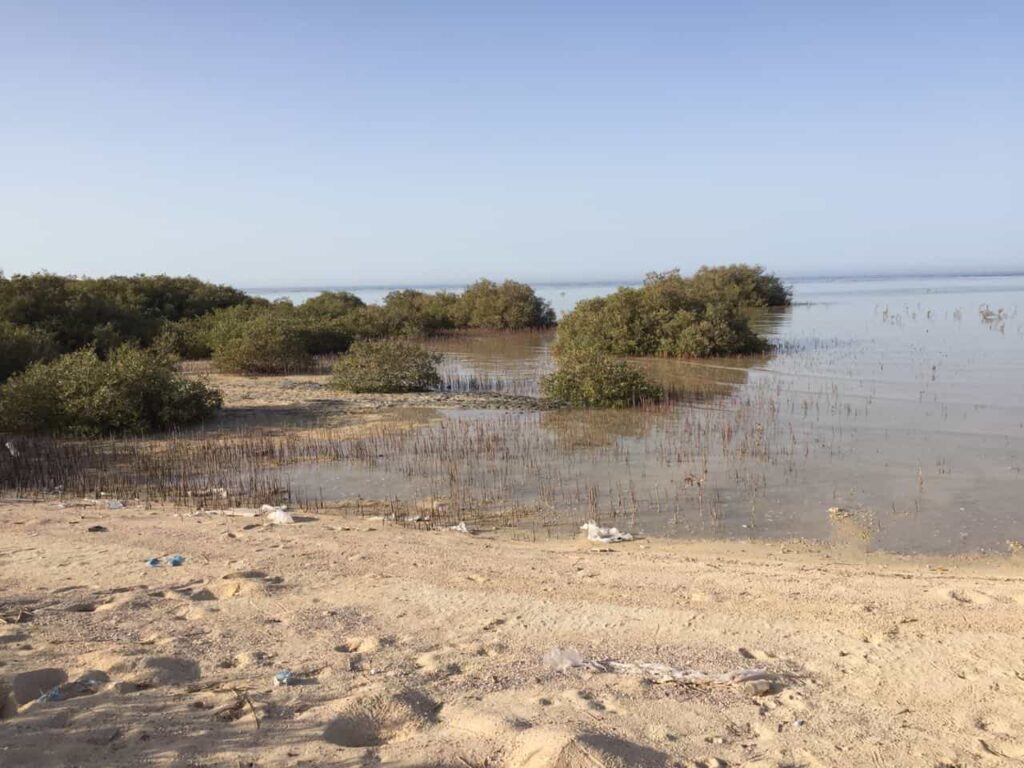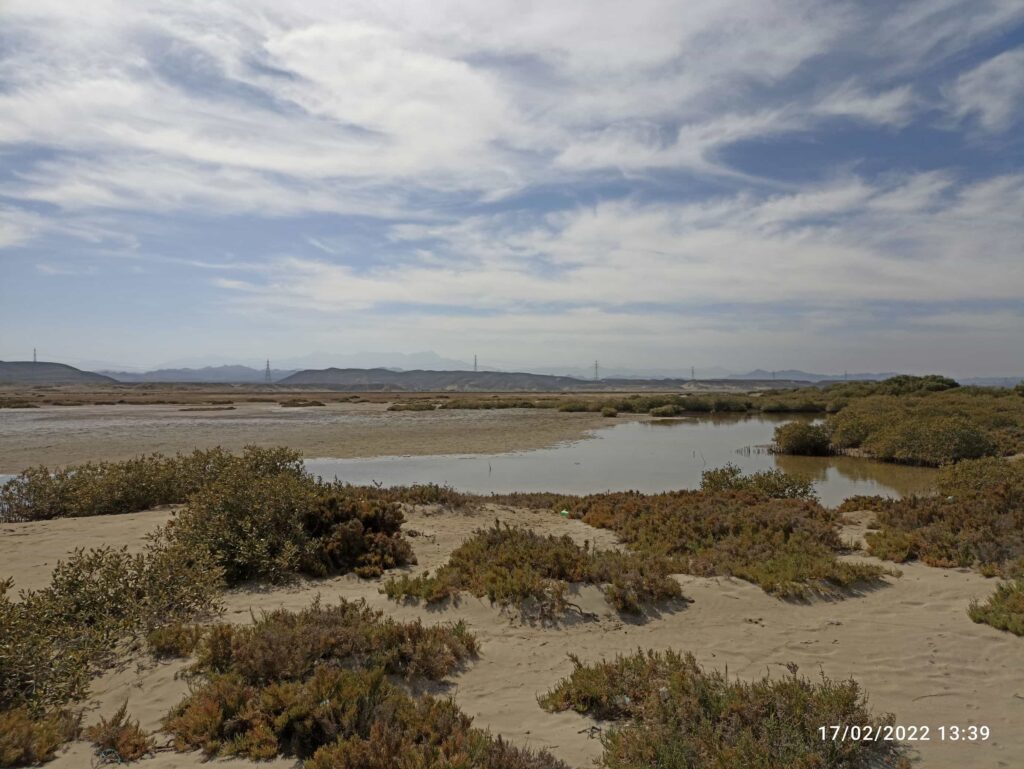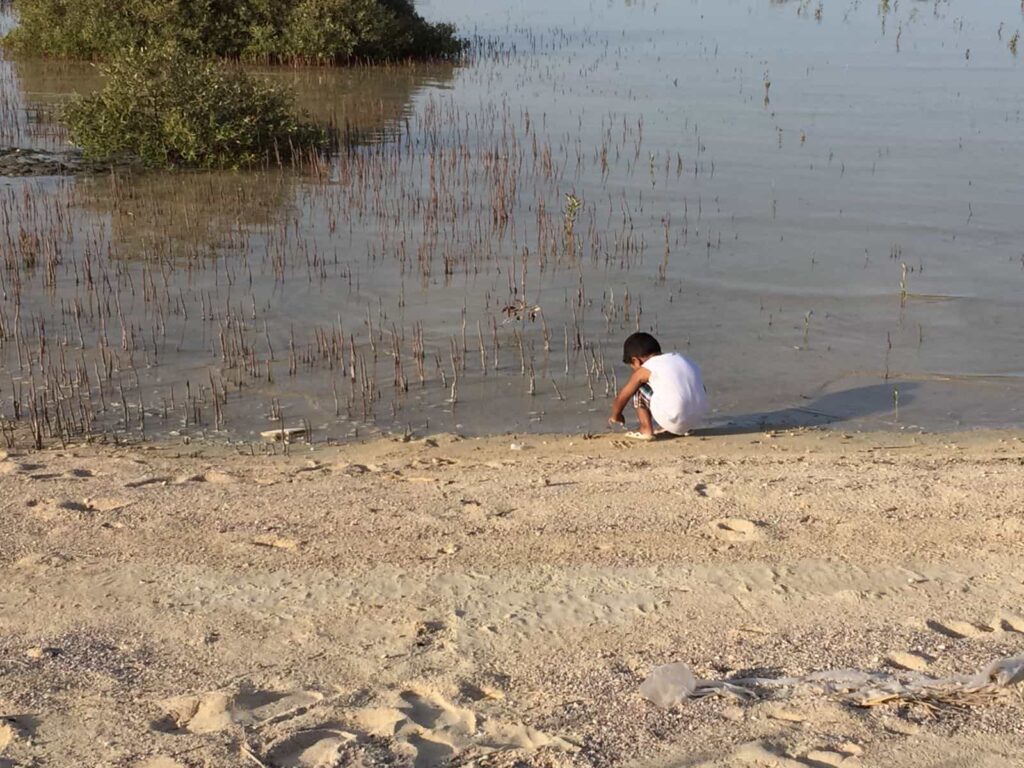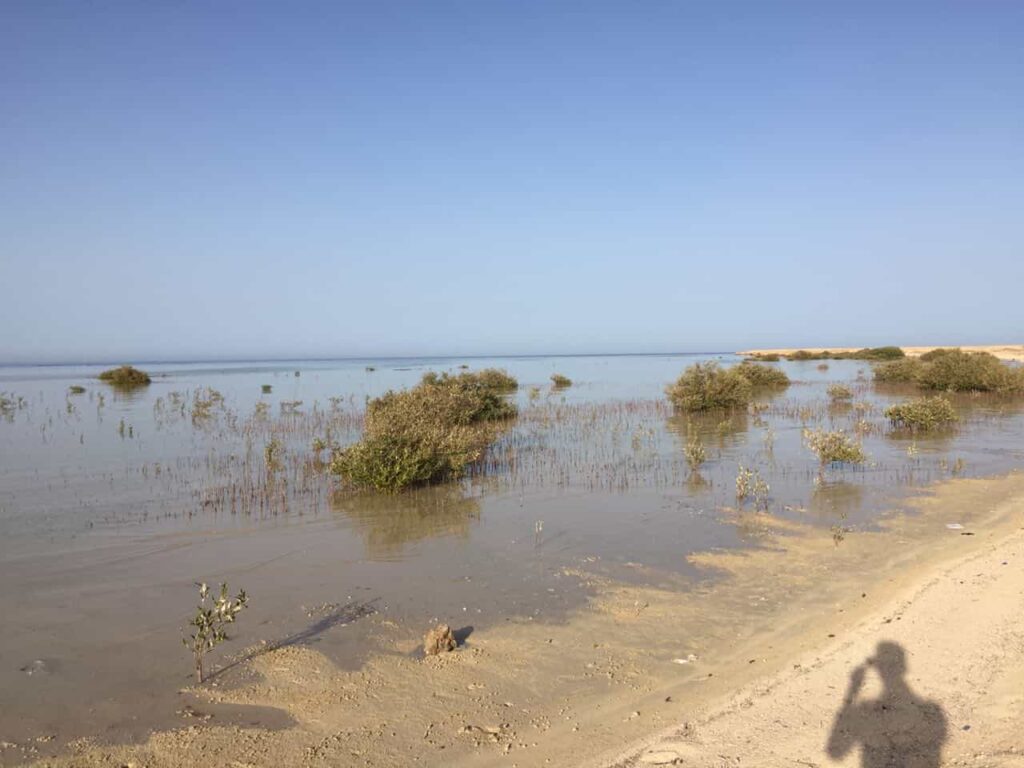Mangroves and resilience against environmental challenges| Interview with Ali Sayed
*Mariam is a junior project coordinator at the Cairo Climate Talks. She has a Bachelor of Science in Biotechnology. She is interested in science communication,, especially in the field of environment.*
Despite being looked at as wastelands, Mangrove forests have a crucial environmental role to play in balancing the ecosystem on planet Earth. From providing a safe nursery for marine life to contributing to the sequestering of blue carbon, Mangroves can be considered climate action heroes. Every year, the 26th of July marks the International Day for the Conservation of the Mangrove Ecosystem. This year to celebrate, the Cairo Climate Talks interviewed Mr. Ali Sayed, co-founder and manager director at Be7ar organization based in Quseer a city in eastern Egypt, located on the Red Sea coast. Mr. Sayed is passionate about environmental advocacy and development, especially in his hometown. In this Interview, we will dive into the importance of mangroves, their distribution in Egypt, and the conservation work happening to protect those trees against challenges.

Photo Credits to Ali Sayed
Cairo Climate Talks: Could you please introduce yourself to the readers? Your name, age, study, and profession?
Ali Sayed: My name is Ali Sayed. I am 43 years old. I studied in the faculty of arts and right now I work as an Arabic language teacher in a public school in the city of Quseer. Moreover, I am the co-founder of Be7ar organization for environment and training. In 2007, we wanted to start a program that helps the kids in Quseer gain some soft skills. In 2009, we did school camps, then environmental-themed camps in the city. The camps included activities such as cleanups, painting walls, and planting trees. Those camps helped us connect more to our environment and understand it better.
Cairo Climate Talks: What are Mangrove trees and where can we find them in Egypt?
Ali Sayed: Mangroves are well-developed trees that grow in coastal areas. These trees are characterized by the ability to adapt to high salinity environments such as seawater. There are about 70 types of mangroves in the world, only two types grow in Egypt, which are Al-Shura and Al-Qandal, which is longer than the Shura.
Mangroves are found in Egypt on the coasts of the Red Sea, starting 25 km north of Hurghada, in addition to 17 km south of the city of Safaga. They are also found 35 km south and north of Qussier, in addition to the Wadi El Gemal Reserve south of Marsa Alam, and in the cities of Halayeb and Shalateen.

Photo Credits to Ali Sayed
Cairo Climate Talks: Mangroves have many environmental benefits, could you please tell us more about them?
Ali Sayed: Mangrove trees are of great environmental importance. First, they act as a shelter for many living organisms, especially small fish and crustaceans. Their leaves are full of organic proteins that provide these organisms with the food they need when they fall into the water.
Mangroves prevent beach erosion because they act as a buffer for sea waves, and are places of residence for birds, especially in the migration seasons.
One of the most important features of mangroves is that they are used as quality indicators of the environment because they are affected by a group of environmental factors. So their prosperity indicates healthy conditions and their small size and inability to grow indicates pollution.
Cairo Climate Talks: What are the impacts of mangroves on coastal residents?
Ali Sayed: The most obvious societal impact of mangrove forests, which extend over vast areas along the coast, is enhancing the fishing environment, as it acts as a refuge for many marine creatures. This helps the locals who practice fishing to continue their profession. Mangroves help provide an ecological balance in the area, which improves the livelihood of the residents.
Cairo Climate Talks: Do the people living in coastal areas in Egypt know about the benefits of Mangroves to them?
Ali Sayed: Yes, to a large extent, the local people in these areas have an innate knowledge of the surrounding environment, so they are aware of the environmental and economic importance of mangroves.

Photo Credits to Ali Sayed
Cairo Climate Talks: Did you notice any difference in mangroves now and their state when you were a little kid?
Ali Sayed: Frankly, the changes that occur to the mangroves were not clear to me except when I started going to the mangrove reserves for the cleaning campaigns that we have been carrying out annually now for the past 17 years. I can now notice a decrease in the areas in which the trees exist. That is why there are attempts to replant the mangroves, but in order for these attempts to succeed, they must be well-studied and farmed in places where trees were previously located.
Cairo Climate Talks: What are the challenges facing Mangrove trees nowadays?
Ali Sayed: The challenges facing the mangroves result largely from harmful human activity, including urban development and the expansion of coastal cities, which led to the removal of many trees to build hotels. In addition to that pollution results from throwing waste into the sea, especially plastic.
Mangrove trees grow slowly and grow by dropping seeds from the tree and thus re-germinating new trees. Therefore, if these seeds fall on one of the plastic bags instead of falling into the water, the growth process will not take place, and also if plastic is present on the branches of the trees, it may prevent the seeds from falling.
Before the construction of highways, the rain floods used to carry silt with it to the sea. This silt provided mangroves with nutrients. However, now the new roads prevent those nutrients from reaching mangroves.

Photo Credits to Ali Sayed
Cairo Climate Talks: How does your work in Quseer and other Red Sea cities contribute to preserving mangroves?
Ali Sayed: We work in environmental awareness and target children and youth in addition to the local population. Our goal is to spread awareness about the importance of these trees environmentally and economically, especially their importance to the fishing profession, which has been the main profession of the region throughout history, since the beginning of God’s creation of the Red Sea, and the fishing profession has been extended and has not disappeared.
The Red Sea witnessed activities such as mining, and it ended, and it had ports, and it ended, and the fishing profession remained as it is, so we try to create an impact on people and spread awareness of the importance of mangroves and how to preserve them.
When we take the children to a mangrove reserve for a clean-up campaign, we talk to them about its importance and notice the difference between the trees.

Photo Credits to Ali Sayed
Cairo Climate Talks: In your opinion, which role should the state have in protecting those trees?
Ali Sayed: The state has a very important role, any role in protection is mainly the role of the state, environmental institutions have an important role as well, but without the help of the state we find results very slowly because the state has tools that can be used that are not available to the institutions.
Cairo Climate Talks: What efforts would you like to see being made to preserve those areas?
Ali Sayed: Firstly, it is important that all areas where mangroves are found be declared as natural reserves and have periodic cleaning campaigns, in addition to organizing trips for children and local residents to these areas so that they realize their importance more.
Supporting the local population to start economic projects that depend on mangrove trees, for example, bee apiaries that are built on mangrove trees produce one of the most valuable and expensive types of honey.
Cairo Climate Talks: Thank you so much for giving us the time and sharing your knowledge with us. We wish you the best of luck in your work.
Ali Sayed: Thank you!
